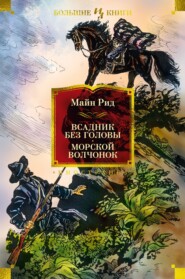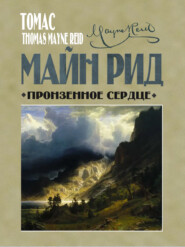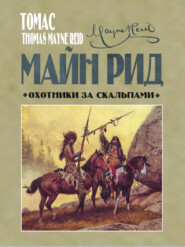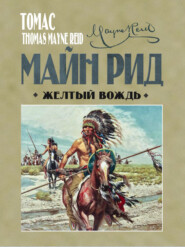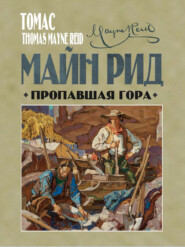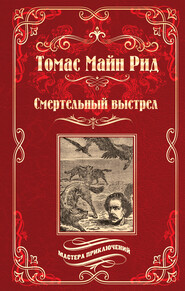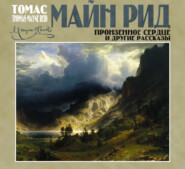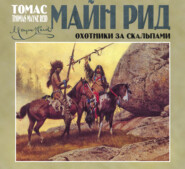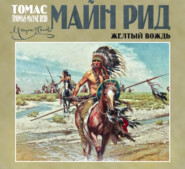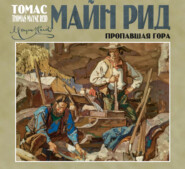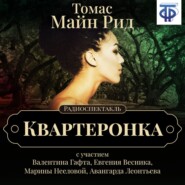По всем вопросам обращайтесь на: info@litportal.ru
(©) 2003-2024.
✖
Odd People: Being a Popular Description of Singular Races of Man
Настройки чтения
Размер шрифта
Высота строк
Поля
Where is he to be seen? where dwells he? what like is his home? what sort of a house does he build? His costume? his arms? his occupation? his habits? These are the questions you would put. They shall all be answered, but briefly as possible – since our limited space requires brevity.
The wild Indian, then, is not to be found upon the Amazon itself, though there are long reaches of the river where he is free to roam – hundreds of miles without either town or estancia. He hunts, and occasionally fishes by the great water, but does not there make his dwelling – though in days gone by, its shores were his favourite place of residence. These were before the time when Orellana floated down past the door of his “malocca” – before that dark hour when the Brazilian slave-hunter found his way into the waters of the mighty Solimoes. This last event was the cause of his disappearance. It drove him from the shores of his beloved river-sea; forced him to withdraw his dwelling from observation, and rebuild it far up, on those tributaries where he might live a more peaceful life, secure from the trafficker in human flesh. Hence it is that the home of the Amazonian Indian is now to be sought for – not on the Amazon itself, but on its tributary streams – on the “canos” and “igaripes,” the canals and lagoons that, with a labyrinthine ramification, intersect the mighty forest of the Montana. Here dwells he, and here is he to be seen by any one bold enough to visit him in his fastness home.
How is he domiciled? Is there anything peculiar about the style of his house or his village?
Eminently peculiar; for in this respect he differs from all the other savage people of whom we have yet written, or of whom we may have occasion to write.
Let us proceed at once to describe his dwelling. It is not a tent, nor is it a hut, nor a cabin, nor a cottage, nor yet a cave! His dwelling can hardly be termed a house, nor his village a collection of houses – since both house and village are one and the same, and both are so peculiar, that we have no name for such a structure in civilised lands, unless we should call it a “barrack.” But even this appellation would give but an erroneous idea of the Amazonian dwelling; and therefore we shall use that by which it is known in the “Lingoa geral,” and call it a malocca.
By such name is his house (or village rather) known among the tapuios and traders of the Amazon. Since it is both house and village at the same time, it must needs be a large structure; and so is it, large enough to contain the whole tribe – or at least the section of it that has chosen one particular spot for their residence. It is the property of the whole community, built by the labour of all, and used as their common dwelling – though each family has its own section specially set apart for itself. It will thus be seen that the Amazonian savage is, to some extent, a disciple of the Socialist school.
I have not space to enter into a minute account of the architecture of the malocca. Suffice it to say, that it is an immense temple-like building, raised upon timber uprights, so smooth and straight as to resemble columns. The beams and rafters are also straight and smooth, and are held in their places by “sipos” (tough creeping plants), which are whipped around the joints with a neatness and compactness equal to that used in the rigging of a ship. The roof is a thatch of palm-leaves, laid on with great regularity, and brought very low down at the eaves, so as to give to the whole structure the appearance of a gigantic beehive. The walls are built of split palms or bamboos, placed so closely together as to be impervious to either bullet or arrows.
The plan is a parallelogram, with a semicircle at one end; and the building is large enough to accommodate the whole community, often numbering more than a hundred individuals. On grand festive occasions several neighbouring communities can find room enough in it – even for dancing – and three or four hundred individuals not unfrequently assemble under the roof of a single malocca.
Inside the arrangements are curious. There is a wide hall or avenue in the middle – that extends from end to end throughout the whole length of the parallelogram – and on both sides of the hall is a row of partitions, separated from each other by split palms or canes, closely placed. Each of these sections is the abode of a family, and the place of deposit for the hammocks, clay pots, calabash-cups, dishes, baskets, weapons, and ornaments, which are the private property of each. The hall is used for the larger cooking utensils – such as the great clay ovens and pans for baking the cassava, and boiling the caxire or chicha. This is also a neutral ground, where the children play, and where the dancing is done on the occasion of grand “balls” and other ceremonial festivals.
The common doorway is in the gable end, and is six feet wide by ten in height. It remains open during the day, but is closed at night by a mat of palm fibre suspended from the top. There is another and smaller doorway at the semicircular end; but this is for the private use of the chief, who appropriates the whole section of the semicircle to himself and his family.
Of course the above is only the general outline of a malocca. A more particular description would not answer for that of all the tribes of the Amazon. Among different communities, and in different parts of the Montaña, the malocca varies in size, shape, and the materials of which it is built; and there are some tribes who live in separate huts. These exceptions, however, are few, and as a general thing, that above described is the style of habitation throughout the whole Montaña, from the confines of Peru to the shores of the Atlantic. North and south we encounter this singular house-village, from the headwaters of the Rio Negro to the highlands of Brazil.
Most of the Amazonian tribes follow agriculture, and understood the art of tillage before the coming of the Spaniards. They practise it, however, to a very limited extent. They cultivate a little manioc, and know how to manufacture it into farinha or cassava bread. They plant the musaceae and yam, and understand the distillation of various drinks, both from the plantain and several kinds of palms. They can make pottery from clay, – shaping it into various forms, neither rude nor inelegant, – and from the trees and parasitical twiners that surround their dwellings, they manufacture an endless variety of neat implements and utensils.
Their canoes are hollow trunks of trees sufficiently well-shaped, and admirably adapted to their mode of travelling – which is almost exclusively by water, by the numerous canos and igaripes, which are the roads and paths of their country – often as narrow and intricate as paths by land.
The Indians of the tropic forest dress in the very lightest costume. Of course each tribe has its own fashion; but a mere belt of cotton cloth, or the inner bark of a tree, passed round the waist and between the limbs, is all the covering they care for. It is the guayuco. Some wear a skirt of tree bark, and, on grand occasions, feather tunics are seen, and also plume head-dresses, made of the brilliant wing and tail feathers of parrots and macaws. Circlets of these also adorn the arms and limbs. All the tribes paint, using the anotto, caruto, and several other dyes which they obtain from various kinds of trees, elsewhere more particularly described.
There are one or two tribes who tattoo their skins; but this strange practice is far less common among the American Indians than with the natives of the Pacific isles.
In the manufacture of their various household utensils and implements, as well as their weapons for war and the chase, many tribes of Amazonian Indians display an ingenuity that would do credit to the most accomplished artisans. The hammocks made by them have been admired everywhere; and it is from the valley of the Amazon that most of these are obtained, so much prized in the cities of Spanish and Portuguese America. They are the special manufacture of the women, the men only employing their mechanical skill on their weapons:
The hammock, “rede,” or “maqueira,” is manufactured out of strings obtained from the young leaves of several species of palms. The astrocaryum, or “tucum” palm furnishes this cordage, but a still better quality is obtained from the “miriti” (Mauritia flexuosa). The unopened leaf, which forms a thick-pointed column growing up out of the crown of the tree, is cut off at the base, and this being pulled apart, is shaken dexterously until the tender leaflets fall out. These being stripped of their outer covering, leave behind a thin tissue of a pale-yellowish colour, which is the fibre for making the cordage. After being tied in bundles this fibre is left awhile to dry, and is then twisted by being rolled between the hand and the hip or thigh. The women perform this process with great dexterity. Taking two strands of fibre between the forefinger and thumb of the left hand, they lay them separated a little along the thigh; a roll downward gives them a twist, and then being adroitly brought together, a roll upwards completes the making of the cord. Fifty fathoms in a day is considered a good day’s spinning. The cords are afterwards dyed of various colours, to render them more ornamental when woven into the maqueira.
The making of this is a simple process. Two horizontal rods are placed at about seven feet apart, over which the cord is passed some fifty or sixty times, thus forming the “woof.” The warp is then worked in by knotting the cross strings at equal distances apart, until there are enough. Two strong cords are then inserted where the rods pass through, and these being firmly looped, so as to draw all the parallel strings together, the rod is pulled out, and the hammock is ready to be used.
Of course, with very fine “redes,” and those intended to be disposed of to the traders, much pains are taken in the selection of the materials, the dyeing the cord, and the weaving it into the hammock. Sometimes very expensive articles are made ornamented with the brilliant feathers of birds cunningly woven among the meshes and along the borders.
Besides making the hammock, which is the universal couch of the Amazonian Indian, the women also manufacture a variety of beautiful baskets. Many species of palms and calamus supply them with materials for this purpose, one of the best being the “Iu” palm (Astrocaryum acaule). They also make many implements and utensils, some for cultivating the plantains, melons, and manioc root, and others for manufacturing the last-named vegetable into their favourite “farinha” (cassava). The Indians understood how to separate the poisonous juice of this valuable root from its wholesome farina before the arrival of white men among them; and the process by which they accomplish this purpose has remained without change up to the present hour, in fact, it is almost the same as that practised by the Spaniards and Portuguese, who simply adopted the Indian method. The work is performed by the women, and thus: the roots are brought home from the manioc “patch” in baskets, and then washed and peeled. The peeling is usually performed by the teeth; after that the roots are grated, the grater being a large wooden slab about three feet long, a foot wide, a little hollowed out, and the hollow part covered all over with sharp pieces of quartz set in regular diamond-shaped patterns. Sometime a cheaper grater is obtained by using the aerial root of the pashiuba palm (Iriartea exhorhiza), which, being thickly covered over with hard spinous protuberances, serves admirably for the purpose.
The grated pulp is next placed to dry upon a sieve, made of the rind of a water-plant, and is afterwards put into a long elastic cylinder-shaped basket or net, of the bark of the “jacitara” palm (Desmoncus macroacanthus). This is the tipiti; and at its lower end there is a strong loop, through which a stout pole is passed; while the tipiti itself, when filled with pulp, is hung up to the branch of a tree, or to a firm peg in the wall. One end of the pole is then rested against some projecting point, that serves as a fulcrum, while the Indian woman, having seated herself upon the other end, with her infant in her arms, or perhaps some work in her hands, acts as the lever power. Her weight draws the sides of the tipiti together, until it assumes the form of an inverted cone; and thus the juice is gradually pressed out of the pulp, and drops into a vessel placed underneath to receive it. The mother must be careful that the little imp does not escape from under her eye, and perchance quench its thirst out of the vessel below. If such an accident were to take place, in a very few minutes she would have to grieve for a lost child; since the sap of the manioc root, the variety most cultivated by the Indians, is a deadly poison. This is the “yucca amarga,” or bitter manioc; the “yucca dulce,” or sweet kind, being quite innoxious, even if eaten in its raw state.
The remainder of the process consists in placing the grated pulp – now sufficiently dry – on a large pan or oven, and submitting it to the action of the fire. It is then thought sufficiently good for Indian use; but much of it is afterwards prepared for commerce, under different names, and sold as semonilla (erroneously called semolina), sago, and even as arrowroot.
At the bottom of that, poisonous tub, a sediment has all the while been forming. That is the starch of the manioc root – the tapioca of commerce: of course that is not thrown away.
The men of the tropic forest spend their lives in doing very little. They are idle and not much disposed to work – only when war or the chase calls them forth do they throw aside for awhile their indolent habit, and exhibit a little activity.
They hunt with the bow and arrow, and fish with a harpoon spear, nets, and sometimes by poisoning water with the juice of a vine called barbasco. The “peixe boy,” “vaca marina,” or “manatee,” – all three names being synonymes – is one of the chief animals of their pursuit. All the waters of the Amazon valley abound with manatees, probably of several species, and these large creatures are captured by the harpoon, just as seals or walrus are taken. Porpoises also frequent the South-American rivers; and large fresh-water fish of numerous species. The game hunted by the Amazonian Indians can scarcely be termed noble. We have seen that the large mammalia are few, and thinly distributed in the tropical forest. With the exception of the jaguar and peccary, the chase is limited to small quadrupeds – as the capibara, the paca, agouti – to many kinds of monkeys, and an immense variety of birds. The monkey is the most common game, and is not only eaten by all the Amazonian Indians, but by most of them considered as the choicest of food.
In procuring their game the hunters sometimes use the common bow and arrow, but most of the tribes are in possession of a weapon which they prefer to all others for this particular purpose. It is an implement of death so original in its character and so singular in its construction as to deserve a special and minute description.
The weapon I allude to is the “blow-gun,” called “pucuna” by the Indians themselves, “gravitana” by the Spaniards, and “cerbatana” by the Portuguese of Brazil.
When the Amazonian Indian wishes to manufacture for himself a pucuna he goes out into the forest and searches for two tall, straight stems of the “pashiuba miri” palm (Iriartea setigera). These he requires of such thickness that one can be contained within the other. Having found what he wants, he cuts both down and carries them home to his molocca. Neither of them is of such dimensions as to render this either impossible or difficult.
He now takes a long slender rod – already prepared for the purpose – and with this pushes out the pith from both stems, just as boys do when preparing their pop-guns from the stems of the elder-tree. The rod thus used is obtained from another species of Iriartea palm, of which the wood is very hard and tough. A little tuft of fern-root, fixed upon the end of the rod, is then drawn backward and forward through the tubes, until both are cleared of any pith which may have adhered to the interior; and both are polished by this process to the smoothness of ivory. The palm of smaller diameter, being scraped to a proper size, is now inserted into the tube of the larger, the object being to correct any crookedness in either, should there be such; and if this does not succeed, both are whipped to some straight beam or post, and thus left till they become straight. One end of the bore, from the nature of the tree, is always smaller than the other; and to this end is fitted a mouthpiece of two peccary tusks to concentrate the breath of the hunter when blowing into the tube. The other end is the muzzle; and near this, on the top, a sight is placed, usually a tooth of the “paca” or some other rodent animal. This sight is glued on with a gum which another tropic tree furnishes. Over the outside, when desirous of giving the weapon an ornamental finish, the maker winds spirally a shining creeper, and then the pucuna is ready for action.
Sometimes only a single shank of palm is used, and instead of the pith being pushed out, the stem is split into two equal parts throughout its whole extent. The heart substance being then removed, the two pieces are brought together, like the two divisions of a cedarwood pencil, and tightly bound with a sipo.
The pucuna is usually about an inch and a half in diameter at the thickest end, and the bore about equal to that of a pistol of ordinary calibre. In length, however, the weapon varies from eight to twelve feet.
This singular instrument is designed, not for propelling a bullet, but an arrow; but as this arrow differs altogether from the common kind it also needs to be described.
The blow-gun arrow is about fifteen or eighteen inches long, and is made of a piece of split bamboo; but when the “patawa” palm can be found, this tree furnishes a still better material, in the long spines that grow out from the sheathing bases of its leaves. These are 18 inches in length, of a black colour, flattish though perfectly straight. Being cut to the proper length – which most of them are without cutting – they are whittled at one end to a sharp point. This point is dipped about three inches deep in the celebrated “curare” poison; and just where the poison mark terminates, a notch is made, so that the head will be easily broken off when the arrow is in the wound. Near the other end a little soft down of silky cotton (the floss of the bombax ceiba) is twisted around into a smooth mass of the shape of a spinning-top, with its larger end towards the nearer extremity of the arrow. The cotton is held in its place by being lightly whipped on by the delicate thread or fibre of a bromelia, and the mass is just big enough to fill the tube by gently pressing it inward.
The arrow thus made is inserted, and whenever the game is within reach the Indian places his mouth to the lower end or mouthpiece, and with a strong “puff,” which practice enables him to give, he sends the little messenger upon its deadly errand. He can hit with unerring aim at the distance of forty or fifty paces; but he prefers to shoot in a direction nearly vertical, as in that way he can take the surest aim. As his common game – birds and monkeys – are usually perched upon the higher branches of tall trees, their situation just suits him. Of course it is not the mere wound of the arrow that kills these creatures, but the poison, which in two or three minutes after they have been hit, will bring either bird or monkey to the ground. When the latter is struck he would be certain to draw out the arrow; but the notch, already mentioned, provides against this, as the slightest wrench serves to break off the envenomed head.
These arrows are dangerous things, – even for the manufacturer of them to play with: they are therefore carried in a quiver, and with great care, – the quiver consisting either of a bamboo joint or a neat wicker case.
The weapons of war used by the forest tribes are the common bow and arrows, also tipped with curare, and the “macana,” or war-club, a species peculiar to South America, made out of the hard heavy wood of the pissaba palm. Only one or two tribes use the spear; and both the “bolas” and lazo are quite unknown, as such weapons would not be available among the trees of the forest. These are the proper arms of the Horse Indian, the dweller on the open plains; but without them, for all war purposes, the forest tribes have weapons enough, and, unfortunately, make a too frequent use of them.
Chapter Three.
The Water-Dwellers of Maracaibo
The Andes mountains, rising in the extreme southern point of South America, not only extend throughout the whole length of that continent, but continue on through Central America and Mexico, under the name of “Cordilleras de Sierra Madre;” and still farther north to the shores of the Arctic Sea, under the very inappropriate appellation of the “Rocky Mountains.” You must not suppose that these stupendous mountains form one continuous elevation. At many places they furcate into various branches, throwing off spurs, and sometime parallel “sierras,” between which lie wide “valles,” or level plains of great extent. It is upon these high plateaux – many of them elevated 7,000 feet above the sea – that the greater part of the Spanish-American population dwells; and on them too are found most of the large cities of Spanish South America and Mexico.
These parallel chains meet at different points, forming what the Peruvians term “nodas” (knots); and, after continuing for a distance in one great cordillera, again bifurcate. One of the most remarkable of these bifurcations of the Andes occurs about latitude 2 degrees North. There the gigantic sierra separates into two great branches, forming a shape like the letter Y, the left limb being that which is usually regarded as the main continuation of these mountains through the Isthmus of Panama, while the right forms the eastern boundary of the great valley of the Magdalena river; and then, trending in an eastwardly direction along the whole northern coast of South America to the extreme point of the promontory of Paria.
Each of these limbs again forks into several branches or spurs, – the whole system forming a figure that may be said to bear some resemblance to a genealogical tree containing the pedigree of four or five generations.
It is only with one of the bifurcations of the right or eastern sierra that this sketch has to do. On reaching the latitude of 7 degrees north, this chain separates itself into two wings, which, after diverging widely to the east and west, sweep round again towards each other, as if desirous to be once more united. The western wing advances boldly to this reunion; but the eastern, after vacillating for a time, as if uncertain what course to take, turns its back abruptly on its old comrade, and trends off in a due east direction, till it sinks into insignificance upon the promontory of Paria.
The whole mass of the sierra, however, has not been of one mind; for, at the time of its indecision, a large spur detaches itself from the main body, and sweeps round, as if to carry out the union with the left wing advancing from the west. Although they get within sight of each other, they are not permitted to meet, – both ending abruptly before the circle is completed, and forming a figure bearing a very exact resemblance to the shoe of a racehorse. Within this curving boundary is enclosed a vast valley, – as large as the whole of Ireland, – the central portion of which, and occupying about one third of its whole extent, is a sheet of water, known from the days of the discovery of America, as the Lake of Maracaibo.
It obtained this appellation from the name of an Indian cazique, who was met upon its shores by the first discoverers; but although this lake was known to the earliest explorers of the New World, – although it lies contiguous to many colonial settlements both on the mainland and the islands of the Caribbean Sea, – the lake itself and the vast territory that surrounds it, remain almost as unknown and obscure as if they were situated among the central deserts of Africa.
And yet the valley of Maracaibo is one of the most interesting portions of the globe, – interesting not only as a terra incognita, but on account of the diversified nature of its scenery and productions. It possesses a fauna of a peculiar kind, and its flora is one of the richest in the world, not surpassed, – perhaps not equalled, – by that of any other portion of the torrid zone. To give a list of its vegetable productions would be to enumerate almost every species belonging to tropical America. Here are found the well-known medicinal plants, – the sassafras and sarsaparilla, guaiacum, copaiva, cinchona, and cuspa, or Cortex Angosturae; here are the deadly poisons of barbasco and mavacure, and alongside them the remedies of the “palo sano,” and mikania guaco. Here likewise grow plants and trees producing those well-known dyes of commerce, the blue indigo, the red arnotto, the lake-coloured chica, the brazilletto, and dragon’s-blood; and above all, those woods of red, gold, and ebon tints, so precious in the eyes of the cabinet and musical-instrument makers of Europe.
Yet, strange to say, these rich resources lie, like treasures buried in the bowels of the earth, or gems at the bottom of the sea, still undeveloped. A few small lumbering establishments near the entrance of the lake, – here and there a miserable village, supported by a little coast commerce in dyewoods, or cuttings of ebony, – now and then a hamlet of fishermen, – a “hato” of goats and sheep; and at wider intervals, a “ganaderia” of cattle, or a plantation of cocoa-trees (cocale), furnish the only evidence that man has asserted his dominion over this interesting region. These settlements, however, are sparsely distributed, and widely distant from one another. Between them stretch broad savannas and forests, – vast tracts, untitled and even unexplored, – a very wilderness, but a wilderness rich in natural resources.
The Lake of Maracaibo is often, though erroneously, described as an arm of the sea. This description only applies to the Gulf of Maracaibo, which is in reality a portion of the Caribbean Sea. The lake itself is altogether different, and is a true fresh-water lake, separated from the gulf by a narrow neck or strait. Within this strait – called “boca,” or mouth – the salt water does not extend, except during very high tides or after long-continued nortes (north winds), which have the effect of driving the sea-water up into the lake, and imparting to some portions of it a saline or brackish taste. This, however, is only occasional and of temporary continuance; and the waters of the lake, supplied by a hundred streams from the horseshoe sierra that surrounds it, soon return to their normal character of freshness.
The shape of Lake Maracaibo is worthy of remark. The main body of its surface is of oval outline, – the longer diameter running north and south, – but taken in connection with the straits which communicate with the outer gulf, it assumes a shape somewhat like that of a Jew’s-harp, or rather of a kind of guitar, most in use among Spanish Americans, and known under the name of “mandolin” (or “bandolon”). To this instrument do the natives sometimes compare it.
Another peculiarity of Lake Maracaibo, is the extreme shallowness of the water along its shores. It is deep enough towards the middle part; but at many points around the shore, a man may wade for miles into the water, without getting beyond his depth. This peculiarity arises from the formation of the valley in which it is situated. Only a few spurs of the sierras that surround it approach near the edge of the lake. Generally from the bases of the mountains, the land slopes with a very gentle declination, – so slight as to have the appearance of a perfectly horizontal plain, – and this is continued for a great way under the surface of the water. Strange enough, however, after getting to a certain distance from the shore, the shoal water ends as abruptly as the escarpment of a cliff, and a depth almost unfathomable succeeds, – as if the central part of the lake was a vast subaqueous ravine, bounded on both sides by precipitous cliffs. Such, in reality, is it believed to be.
A singular phenomenon is observed in the Lake Maracaibo, which, since the days of Columbus, has not only puzzled the Curious, but also the learned and scientific, who have unsuccessfully attempted to explain it. This phenomenon consists in the appearance of a remarkable light, which shows itself in the middle of the night, and at a particular part of the lake, near its southern extremity. This light bears some resemblance to the ignis fatuus of our own marshes; and most probably is a phosphorescence of a similar nature, though on a much grander scale, – since it is visible at a vast distance across the open water. As it is seen universally in the same direction, and appears fixed in one place, it serves as a beacon for the fishermen and dye-wood traders who navigate the waters of the lake, – its longitude being precisely that of the straits leading outward to the gulf. Vessels that have strayed from their course, often regulate their reckoning by the mysterious “Farol de Maracaibo” (Lantern of Maracaibo), – for by this name is the natural beacon known to the mariners of the lake.






